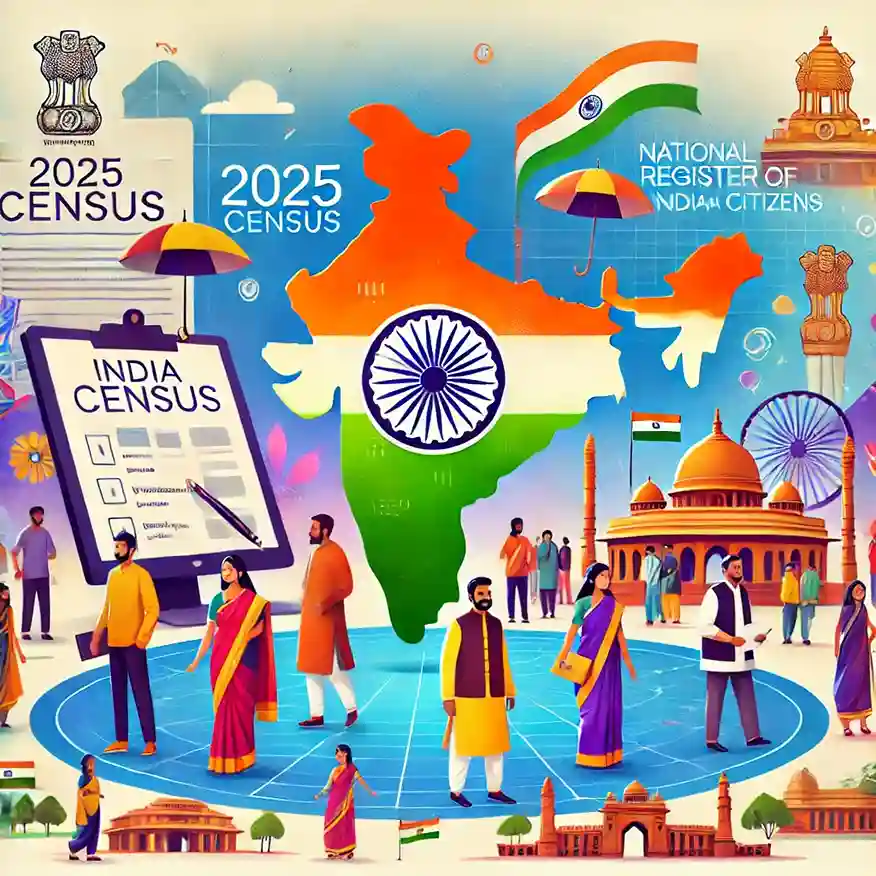Have you ever wondered about the story behind your citizenship? Grab a cup of chai, and let’s dive into something that will reshape how we understand our national identity – the fascinating world of the 2025 Census and NRIC
Why Should You Care? A Personal Peek into National Identity
Imagine sitting with your grandparents, listening to partition, migration, and belonging stories. The 2025 Census isn’t just another government exercise – it’s a milestone that continues that narrative of who we are as Indians. This isn’t just about numbers; it’s about your story, my story, our collective story.
Table of Contents
The 2025 Census: More Than Just Counting People
Let’s break this down. The upcoming census isn’t just about counting heads. It’s a comprehensive exercise that will lay the groundwork for the National Register of Indian Citizens (NRIC). Think of it as a grand family album, documenting every branch of our national family.
A Historical Context: Tracing the Roots
The journey of citizenship documentation in India is rich and complex. Dating back to the Citizenship Act of 1955, this process has been evolving. Remember the Kargil War’s aftermath? That’s when the Subrahmanyam Committee recommended creating a robust database that could distinguish citizens from non-citizens.
What Makes the 2025 Census Special?
Unlike previous censuses, this one is different. It’s not just collecting data – it’s creating a comprehensive narrative of Indian citizenship. Here’s what makes it unique:
Detailed Documentation Collecting everything from your name to family relationships
Technological Integration: Leveraging existing databases like Aadhaar
Transparency: Multiple stages for verification and public participation
NRIC vs. Aadhaar: Clearing the Confusion
I know what you’re thinking – “Didn’t we already have Aadhaar?” Great question! Let me break it down simply:

Aadhaar: Your identity card for all residents
NRIC: Your official citizenship verification system
It’s like the difference between a passport and a citizenship certificate. Similar, but fundamentally different.
The Multi-Phase Process: Your Citizenship Journey
Imagine this as a carefully choreographed dance of documentation:
1. Census Collection: Gathering comprehensive demographic data
2. Biometric Verification: Eliminating duplicate records
3. Public Claims: A chance for you to verify and challenge records
4. Final Verification: Distinguishing citizens from non-citizens
Learning from Assam: Challenges and Opportunities
The Assam National Register of Citizens (NRC) taught us valuable lessons. Stringent documentation requirements left many vulnerable. The 2025 Census and NRIC are designed to be more inclusive, and more understanding.
Privacy Concerns: Your Data, Your Control
Let’s address the elephant in the room – data privacy. The Supreme Court’s guidelines and robust protection mechanisms are in place. Your information isn’t just data; it’s a trust between you and the nation.
What Can You Do? Your Role in This National Mission
Here’s where you come in. This isn’t a passive process. Be prepared:
- Keep your documents organized
- Stay informed about the process
- Participate actively in the verification
- Help your community understand the process
Technology Meets Tradition
The 2025 Census represents a beautiful intersection of technological advancement and traditional record-keeping. We’re not just documenting; we’re storytelling
A Personal Reflection: Beyond Documentation
This isn’t just a government exercise. It’s a moment of national introspection. Who are we? Where do we come from? How do we belong?
As we approach this pivotal moment, remember – you’re not just a statistic. You’re a vital part of India’s ongoing story of diversity, inclusion, and belonging.
FAQs: Your Burning Questions Answered
Q: Will this affect my citizenship?
A: Not if you’re a legitimate citizen. This is about verification, not exclusion.
Q: How long will this process take?
A: The 2025 Census is just the beginning. Expect a comprehensive process spanning several months.
Q: What documents should I prepare?
A: Birth certificates, family records, educational documents, and proof of residence.

